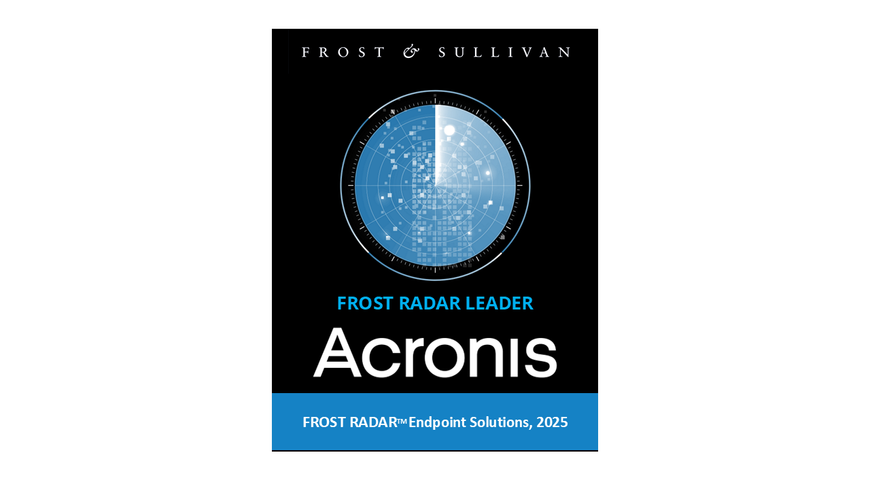It’s hard to avoid stories about cyber-attacks and data breaches. Companies like Target, Equifax and Yahoo have all incurred major breaches, so we know our privacy is at stake.
But do we know what we can do about it?
Most of us do not, according to a study conducted by the Boston-based Advanced Cyber Security Center (ACSB). Despite privacy concerns, consumers “appear unaware of the tools available to them to protect their data”.
It’s time to change that.
Encrypted backup is one of the easiest to use, most secure tools you can use to protect yourself. Let’s take a closer look at what encrypted backup does and evaluate two different options: iTunes and Acronis True Image
Backup Encryption Basics
Encrypting a file essentially translates the file’s data into a secret language. Only you hold the key: an impenetrable password of your own design. Behind the scenes, an algorithm scrambles the data into an unpredictable, unique format. When you need to recover your files, you enter your password and … poof! Just like Harry Potter waving his wand, everything reverts to its original form.
Encrypting backups gives you personal control over your personal information. It’s a level of protection that goes way beyond an email password, for example. If your iPhone gets stolen or you leave your computer or iPad on an airplane, your information is locked securely with the password only you know.
Should I Encrypt Backups?
Security is perhaps an obvious reason to start encrypting your backups. While common mishaps like losing your device can be disastrous, there are other threats. Identity theft is a serious, life-changing crime. Victims often endure weeks of stressful maneuvering, trying to find out how much of their personal information was compromised. Then, they must attempt to put the pieces of their life back together again, which can take months or even years. (Hint: Start with the Federal Trade Commission.)
Your Phone is Too Smart
Nowadays our smartphones are uniquely important to us because they are smart; they contain a data-rich blueprint of our lives. Facebook and other social media tools are one common element for users. For example, do you also often browse to Amazon from your phone to make a quick purchase? What about other apps? All of these touches reveal more about you through the data you share while simply living your digital life.
Meanwhile, if you use your iPhone or iPad for work, encrypted backup is even more essential and might even be mandated by your company. Sensitive data that falls into the wrong hands can lead to all kinds of mayhem. Depending on your company’s policy, you could be held accountable for a security breach or loss.
Did You Know?
Acronis True Image also supports Android phones. For the purposes of this article and our comparison to iTunes, we’ll focus on iOS.
Upgrading Your iPhone or Switching Carriers
Convenience is another reason encrypted backup is used. For example, with Apple’s iOS, you can restore your iPhone or iPad or load a device from an encrypted backup so all of your stored passwords are retrieved and transferred at once. You will not need to re-enter individual passwords if you are restoring from an encrypted backup. This trick makes upgrading your device remarkably painless and you’re less likely to run into problems should you be switching carriers, too.
iTunes Encrypted Backup
One commonly known, free tool for backup is iTunes, which offers an encryption option. iTunes encrypted backup typically includes passwords, Wi-Fi settings, and website browsing history. It also backs up the Health and Activity Data that is captured from iWatch apps. Beyond these elements, iTunes may or may not be able to help.
Before initiating an iTunes encrypted backup, be sure you are comfortable with which components will be backed up, and which ones won’t be included. (Practical considerations, like how much available storage you have on your computer, are equally as important, too.) Should you have to restore from the encrypted backup, your entire phone will not be restored completely.
iTunes requires Moving Parts – Literally
While we don’t want to lose any of our data and we say security matters to us, few of us add “encrypt iPhone backup” to our nightly routine. It’s no wonder. The common backup solutions many of us might think of, like iTunes, take a lot of time and dedication to execute.
iTunes backup requires proactive monitoring and is a bit clunky in implementation, for example. After physically plugging your iPhone into your computer, you must turn-on the “Encrypt” backup option in iTunes for it to begin regular encrypted backups.
Once done, you should also make a regular habit of backing up your encrypted backup to offsite storage, such as iCloud or another online backup service. Any thorough backup strategy requires one storage location beyond your local computer. This isolates your data from the dangers that can threaten your local drives, such as a hardware failure, malware attack or natural disaster. As a key component of the so-called 3-2-1 rule of backups, the cloud provides the kind of convenient and accessible off-site security needed to keep your data safe.
Cloud backups do not happen automatically with iTunes and requires additional managing.
Acronis True Image - Encrypted Backup Solution
Acronis True Image makes it simpler and more convenient to implement a regular encrypted backup plan. Getting started requires a quick initial setup on your computer. From that point forward, encrypted backup can happen automatically – and wirelessly.
Control Over Your Data Encrypion
Acronis believes you alone should have total control over your data’s destiny. When you load Acronis True Image to your computer, you’ll configure settings that make sense for you. For the sake of this article, we’ll assume you wish to encrypt backups for your iPhone and will backup offsite to the Acronis Cloud for additional protection.
When you install Acronis True Image, select the “encrypt backup” option and enter a password that you will remember. Files are automatically encrypted during each step of the backup process – the moment you backup to your computer, while your data is transferred to the Acronis Cloud, and once it is stored there. You will not need to re-enter your password again until you wish to recover files.
Did You Know?
Acronis uses government-grade encryption protocols, a level that financial institutions and health care providers trust to secure their files and comply with regulatory requirements. Accessing your files would take a brute-force hack, which requires more than a lifetime to execute.
Honey, I’m Home!
You can adjust permissions within Acronis True Image so that the moment you arrive home, it will automatically begin backing up over your home Wi-Fi network to a local Mac, PC or a Network Attached Storage (NAS) device. You won’t even have to think about encrypted backup; it will happen automatically.
Final Thought
Now that we know encrypted backups are a valuable tool to protect your data, it’s up to you to determine which solution makes sense for you. iTunes is undoubtedly a familiar, free option that can meet simple needs. For more comprehensive, secure data protection, you might consider Acronis True Image, since it delivers convenience and data-security confidence to novices and more advanced consumers alike.
About Acronis
A Swiss company founded in Singapore in 2003, Acronis has 15 offices worldwide and employees in 50+ countries. Acronis Cyber Protect Cloud is available in 26 languages in 150 countries and is used by over 21,000 service providers to protect over 750,000 businesses.



